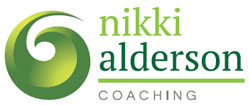A six minute read on the good and bad outcomes of the pandemic in terms of remote working and how setting boundaries can help combat the issues, reduce stress and avoid burnout.
The Legacy Of The Pandemic
Commuted Commute
Whilst the pandemic can be thanked for eradicating frustrating, daily commutes, conversely, it is responsible for disproportionately extending the working day. Countless more people through Covid moved away from the Dolly Parton 9 to 5 and now find themselves at their desks much earlier in the morning whilst also working even later into the early evening than ever before, late afternoon at best.
Always on
In the same way, with the rush to remote working came the “always on” mentality, with organisations expecting overnight that employees become accessible round the clock, 24/7. Out of hours contact became fair game. Logging on beyond contracted hours at certain firms has become a rather troubling norm, as people struggle to maintain boundaries, both individually and whilst operating as part of a team.
Living from work
Working from home has, for them, felt on occasion more like living from work, as employees’ sense of work life balance has reduced in direct proportion to the insidious creep of our professional lives. What had previously been sacrosanct personal, or family, time is no more. Zoom and Teams calls, whilst easy to access, mean people are only the tap of a “Join” button away. Without blurring backgrounds for example though, clients soon had a peek into our personal lives in ways which never before had been possible, and perhaps that we had never wanted either.
Office Life: Love it or loath it?
Trainees missed the face to face mentorship and “water cooler” moments to learn through the experience of others and office life osmosis, and to let off steam. Instead, many found themselves working often from single rooms in a shared house in conditions less than conducive to a productive start in their professional lives. Whilst some, like them, have a massive incentive to return to the office full time, care givers on the other, have taken to the hybrid life. If they only come into the office now once or twice a week, as a team a fair system or rota is something that would clearly need careful thought and good management.
Things to celebrate and harness post-pandemic
Having said that, we know that remote working has considerable advantages to working mothers in terms of accessibility, and that pandemic productivity soared. Provided boundaries are clear, burn out is avoided and a healthy balance is struck, there is every reason to celebrate the huge strides made post-pandemic to learn lessons from lockdown and transform the legal world for the better, with flexibility and fair access to all.
The Problems and What To Do To Combat Them
(A) Boundaries v Burn-Out: the problem with people pleasing
Being clear about personal boundaries in the workplace can be tough. Firstly, we have to be sure about what a healthy boundary looks like, then we have to navigate a way to successfully negotiate for, and implement, it.
We’ve all been that person – a trainee solicitor or pupil barrister with the one non-negotiable goal of securing a permanent place at the firm or as a Chambers’ tenant – with a tendency to people please. The “first in, last out” approach, falling over ourselves to show willing and taken on anything that is asked of us, however significant already our other workload is.
The problem is, it’s not sustainable. Being a “Yes woman” can quickly lead to unhealthy, longer term power imbalances as well as burn out, overwhelm and a psychologically unsafe environment where, for example, juniors feel unable to be honest about stress levels and workload, putting themselves and their health under unnecessary pressure.
So what can we do either individually or as a team?
(i) Individual Boundaries
Individually, it pays to remember that empowerment comes from having a clearly defined goal and asking of every request “Does this serve me?”
Lots of factors to consider in that, for example does it serve…
- my career progression goal?
- me as a key team player?
- me as an individual?
- my wellbeing or mental health?
If not, how can you successfully navigate saying no? Many people struggle with this, to their personal detriment. They say yes to everything, spreading themselves so thinly, then end up doing everything badly rather than a few things well.
Saying No
Sometimes a polite but firm “no” is the only way to communicate a clear line in the sand. But knowing how many people find it such a tricky, even offensive little word, I’d recommend instead taking a look at Essentialism by Greg McKeown in which there are some brilliant tips around saying no without actually saying the word. In summary, it takes practice, and there are plenty of strategies to deploy.
Consider pausing before delivering a no, whether by seconds or by asking for some time, possibly a few days, to decide. By doing this, the person making the request will soon realise that if it is a no, it is a considered one, and neither an easy or quick decision.
Humour can be useful to laugh off an unreasonable ask, provided it is face to face with someone with whom rapport is good. These things can be lost in translation a bit if communicated by email.
A “No for now” might soften the blow and keeps the door open to both parties to either repeat, or accept, the request, and could also be accompanied by a helpful referral – whilst you don’t have current capacity, perhaps another member of your team might instead.
(ii) Team Boundaries
Whilst we are all familiar with the buzz phrase, “There’s no I in team”, a high functioning team will only operate as such when the individuals are happy working within it and feel their needs are being met, both personally and collectively. For example, confidently referring another team member to take on work for which you don’t have capacity, relies on 2 things: firstly, that it is a fair and reciprocal arrangement; and secondly, there is trust, open communication and psychological safety within the team to be able to honestly reveal levels of work capacity and stress.
In order to facilitate this type of cohesion, it makes sense to encourage regular team calls or face to face meetings to build those team relationships. Further, be clear about expectations: are out of office hours email requests acceptable? If so, do they need to be responded to within a certain time frame? Is it necessary to schedule messages to land within “normal” or agreed working hours, or to ignore them until within a clearly defined period? Getting agreement and buy in from the majority will make achieving such expectations far more manageable, which in turn pays dividends for the work life balance of all.
(B) Maintain a healthy Work life Balance or Blend
If pandemic burnout levels have taught us anything, it’s that people are adjusting to the idea that work and life are, from hence forth, inextricably linked. As opposed to achieving a work-life balance, better now to aspire to a work-life blend or integration.
Know what your preferred term means to you; be aware of how you can achieve that within your organisation; gravitate towards, and model the ethos of, those role model leaders who you believe have the balance right.
The 2 biggest obstacles I see to doing so, however, are
- workload
- digital distraction
Be the person consistently logging off or leaving work at a reasonable time. Schedule draft emails, being mindful of the potential negative impact of out of ours work on the wellbeing of the recipient. Introduce, and take, wellbeing days when offered. Take personal responsibility for achieving your own work life balance through the healthy use of boundaries, as discussed above, and particularly around the use of digital technology.
Of course, in this regard, we are seeing something of a conflict between the benefits to be gained from the ease with which we can keep connected online and the increased incidents of burn out. Sometimes it is necessary to quieten, even silence, the digital din. Some easy wins can be gained by using automatic out of office notifications during the working day, as opposed to only when away on holidays, to inform people that emails will only be checked at set times in the day and avoid getting sucked into inbox reactivity and overwhelm.
Other definitive boundaries can be created by either activating airplane mode, or by having a separate work and personal phone or tablet, helping to maintain a clear delineation between the two. Likewise, being clear about your working hours and days helps to manage expectations of clients, your team and most importantly yourself.
My challenge to you: Sticking to boundaries with confidence and conviction – Are you up for the challenge?
Nikki Alderson Biography
Nikki Alderson, specialist coach, speaker and author, and former Criminal Barrister with 19 years’ experience:
• supports organisations, law firms and barristers’ Chambers to retain talent; and
• empowers lawyers to achieve career ambitions.
Nikki specialises in 3 areas:
• Emerging leaders and leaders in transition
• Career break returners, and
• Workplace resilience, mental toughness, confidence and wellbeing.
Learn more about her services here: www.nikkialdersoncoaching.com.
Nikki is the author of Amazon No.1 Bestseller Raising the Bar: empowering female lawyers through coaching, (https://amzn.to/3fodKQX), a TEDx Speaker (https://youtu.be/MYsuUnKt9XA), nominee for the Inspirational Women Awards, Champion of the Year Category and finalist in the 2020 Women in Law Awards, Legal Services Innovator of the Year and 2019 International Coaching Awards, International Coach of the Year Category.

